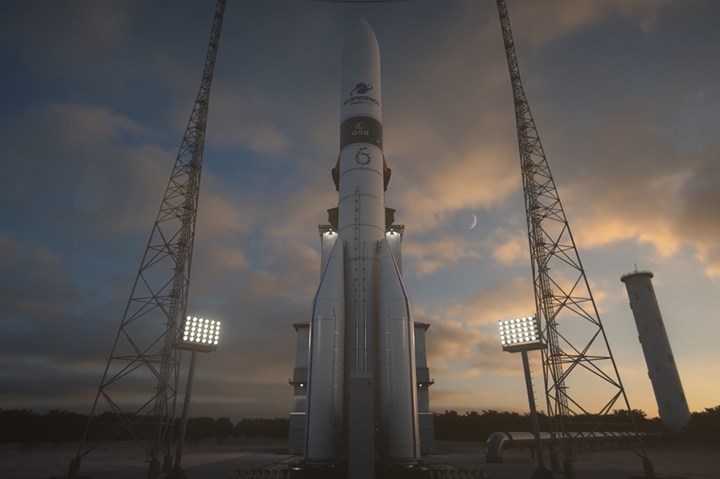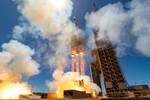ESA, ArianeGroup PHOEBUS contract paves the way for composite rocket stage development
ArianeGroup to collaborate with MT Aerospace to explore using carbon fiber to lightweight the upper stage of the Ariane 6 launch vehicle.

Photo Credit: ArianeGroup
The European Space Agency (ESA, Paris, France) and ArianeGroup (Paris), lead contractor and design authority for the Ariane 6 launch vehicle, have signed a new technological development contract to explore the use of carbon fiber composites to lightweight the Ariane 6’s upper stage. This goal falls under the PHOEBUS (Prototype of a Highly OptimizEd Black UpperStage) program, which ArianeGroup reports will increase the maturity of the technologies needed to lower the upper stage’s manufacturing cost and reduce its weight.
According to ArianeGroup, continuous improvements of the Ariane 6 launcher, including the use of composite technologies, are key aspects that will further enhance its competitiveness. MT Aerospace (Augsburg, Germany) will be joining ArianeGroup to collaboratively design and test the PHOEBUS upper stage cryogenic composite technology prototype (learn more information about a Type V pressure vessel developed for storing cryogenic space launch vehicle propellants). This partnership, which began in May 2019 with an initial phase A/B1 design contract, will continue under the ESA contract.
“One of the main challenges is to ensure that the composites are just as tight and robust as metal parts for the extremely cold and penetrating liquid hydrogen,” says Pierre Godart, CEO of ArianeGroup in Germany. “This new contract demonstrates the confidence of the ESA and DLR space agencies, our team and our partner, MT Aerospace, with whom we have been working for a long time, notably on metal parts for the Ariane 6. We will continue our collaboration to position Germany and Europe at the forefront of cryogenic composite technologies for the storage of liquid hydrogen and oxygen.”
To demonstrate the maturity of all the necessary technologies, ArianeGroup says it will contribute its know-how in launcher stage technology and systems integration, while MT Aerospace will be responsible for the materials and technologies intended for composite tanks and structures in cryogenic conditions.
The technologies developed under the contract will be integrated into an upper stage demonstrator beginning in 2023, in order to demonstrate that the system is compatible on a large scale (scale 1 for the LOX tank, and scale 2/3 for the LH2 tank) with the liquid oxygen-hydrogen mixture.
ArianeGroup says its ultimate goal with PHOEBUS is to pave the way for further Ariane 6 stage developments, as well as the introduction of cryogenic composite technologies for the aeronautics sector.
Related Content
-
Optimizing robotic winding of composite tanks and pipes
Pioneer in mandrel-based reinforced rubber and composite products, TANIQ offers TaniqWindPro software and robotic winding expertise for composite pressure vessels and more.
-
Heat mapping simulation to improve AFP parts
An optical model developed for Coriolis Composites’ SimuReal AFP process simulation software enables verification of energy distributions during AFP to better define heating laws.
-
NCC leads composites manufacturing phase of eXtra wing demonstrator
Key structural elements for a 6-meter section of the Airbus biomimetic wing were undertaken by NCC engineering specialists to produce 28 one-off flying parts.
















